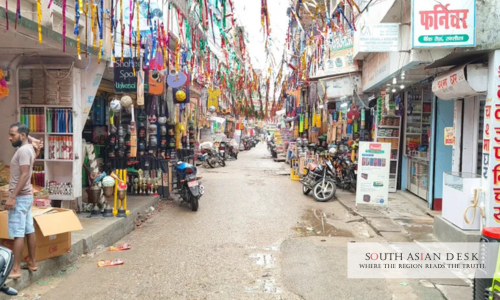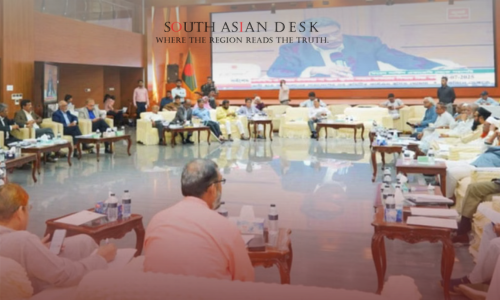Nepal unrest, sparked by Gen Z-led anticorruption protests on Tuesday, September 8, 2025, in Kathmandu and southern regions, has disrupted India border trade at key points like Raxaul in Bihar, where Nepali buyers’ absence has halved market activity; this stems from 72 deaths and over 2,000 injuries, prompting tightened security and reduced crossings along the 1,750 km open frontier.
The ripple effects of the unrest on India border trade extend beyond local economies, threatening South Asia’s interconnected supply chains and regional stability. As India accounts for two-thirds of Nepal’s merchandise trade, totaling $8.5 billion USD in 2024-25, this slowdown exacerbates vulnerabilities in landlocked Nepal’s access to essentials like petroleum and fertilisers, while straining Indian border states’ revenues.
In a region prone to political flux, such disruptions highlight the fragility of open borders under the 1950 Indo-Nepal Treaty of Peace and Friendship, potentially inviting external influences and hindering broader initiatives like trilateral energy cooperation with Bangladesh.
Nepal Unrest Disrupts Daily Flows in India Border Trade
The Nepal unrest, which escalated into widespread clashes including the burning of parliament and politicians’ homes, has cast a long shadow over India border trade. By Wednesday, September 24, 2025, border markets in Raxaul, Bihar, mere kilometres from Nepal’s Birgunj, remain eerily quiet, with traders reporting a 90 per cent drop in Nepali footfall. This comes ahead of the Dashain festival, set for Thursday, October 2, to Wednesday, October 15, 2025, traditionally a peak period for cross-border shopping.
Raj Kumar Gupta, secretary of the Raxaul Chamber of Commerce and Industries, noted the stark contrast: “People generally come here to buy new clothes and other items during the festival, but the current situation will certainly reduce the magnitude of the grand celebrations, which will affect our business badly.” Similar sentiments echo in Muzzaffarpur, 140 km from Raxaul, where bangle production for Nepal has halted entirely since the unrest began.
The open border, spanning Uttar Pradesh, Uttarakhand, Bihar, West Bengal, and Sikkim, facilitates passport-free movement under longstanding ties. However, the Nepal unrest prompted Indian authorities to heighten vigilance; the Sashastra Seema Bal (SSB) and Bihar Police have intensified patrols at checkpoints, suspending rail services between Janakpur in Nepal and Jaynagar in India until further notice, as per a request from Nepalese officials.
Key Impacts on India Border Trade Amid Nepal Unrest
India’s border trade relies heavily on seasonal influxes, with Nepali consumers driving sales of Indian goods like salt, sugar, rice, vehicles, and cotton textiles. In 2024-25, bilateral exchanges reached $8.5 billion USD, featuring $7.3 billion USD in Indian exports and $1.2 billion USD in imports such as hydroelectric power and handicrafts. Yet, the unrest has frozen these dynamics, particularly in Bihar’s 726 km border stretch across seven districts: East Champaran, West Champaran, Sitamarhi, Madhubani, Supaul, Araria, and Kishanganj.
Arun Kumar Gupta, a 55-year-old cloth trader in Raxaul, described the standstill: “Over 90 percent of the businesses in markets bordering Nepal depend on Nepalese citizens.” His shop, like many, struggles to cover salaries for staff amid zero sales. Suresh Kumar, who runs a ladieswear outlet, added: “The political turmoil has left people too scared to go back to spending money normally. They are worried the violence could erupt again.”
Further afield, the unrest has stranded over 100 Indian truck drivers and disrupted tourism, a sector contributing 8 per cent to Nepal’s economy with nearly 1.2 million annual visitors. Incidents like the looting of Kathmandu’s Hilton hotel and the temporary closure of Tribhuvan International Airport have deterred travellers, with bookings peaking pre-violence now evaporating.
Broader Repercussions for India Border Trade
In Uttar Pradesh and West Bengal, similar curbs prevail. At Sunauli-Bhairahawa and Panitanki, trade routes vital for petroleum and fertiliser shipments have seen partial halts, with queues of stranded vehicles reported on Tuesday, September 9, 2025. Shyam Sundar Bhimseria, president of the North Bihar Chamber of Commerce and Industry, estimated: “It is difficult to estimate the total loss due to the tension, but it would have a huge impact on those businesses that depend on it completely.”
Ehtashamul Haque, a 37-year-old bangle trader in Muzzaffarpur, confirmed a total shutdown: “The impact is 100 percent as we have not sent any supplies to the border areas since the violence broke out.” This has upended production plans geared towards Dashain, amplifying losses in India’s border trade networks.
The Nepal unrest also triggered a migrant exodus, with thousands of Nepalis, including over 13,000 students, rushing back from India, further depressing cross-border activity. Indian Prime Minister Narendra Modi condemned the unrest as “heart-rending,” underscoring Delhi’s concerns over spillover effects.
Background
The Nepal unrest traces to anticorruption demonstrations ignited by frustration over elite enrichment amid economic woes, led by a youth movement rejecting decades of governance failures. Protests erupted on September 8, 2025, culminating in former Prime Minister KP Sharma Oli’s resignation and the appointment of 73-year-old Sushila Karki as interim leader on September 10, 2025. Nepal’s army imposed a curfew and restored order by September 17, 2025, after 72 fatalities, including one Indian national.
Historically, the 1,750 km border fosters deep ties, from Gurkha recruitment in the Indian army (32,000 strong) to shared Hindu-majority communities. Yet, past frictions—like the 2015 Madhesi blockade that slashed trade by one-third—highlight vulnerabilities. Recent disputes over Kalapani and Lipulekh add layers, even as India and China resumed trade at contested points in 2025.
Nepal’s Gen Z uprising, praised by observers like Ashish Pradhan of the International Crisis Group as a “wholesale rejection of the political class,” has suspended digital infrastructure and media operations, complicating recovery.
What’s Next Amid Nepal Violence
With elections slated for March 2026, focus turns to stabilising India border trade through eased security and renewed confidence. Traders anticipate a gradual thaw post-Dashain, but persistent Nepal unrest fears could prolong the chill, testing the resilience of this vital South Asian lifeline.
Published in SouthAsianDesk, September 24th, 2025
Follow SouthAsianDesk on X, Instagram, and Facebook for insights on business and current affairs from across South Asia.






